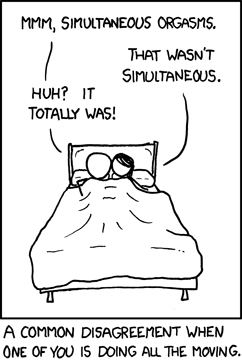I was performing “some assembly required” of equipment in the lab recently, and got stuck when I couldn’t find the proper tool. There is only one such tool in the lab — an allen key of a particular size — and it wasn’t in the tool chest, which is not unusual. Tools are routinely used and then set aside on the most convenient unoccupied flat surface, after which they are shuffled around to create more unoccupied surface area, which eventually obscures some of the items that have been piled up. Murphy’s law dictates the most critical items will be obscured the most.
Luckily I had not left this for the last minute (the lack of procrastination is hidden here — I was avoiding other work that was less pleasant. Lab work, even the mundane variety, is almost always preferable to paperwork), so I was able to put a BOLO (Be On Look Out) out for the tool, and it turned up before it could make a break for a lab with no extradition treaty.
In the paradigm of our lab, this induced me to buy some more copies of the tool. My time has value, in the grand scheme of things, and wasting it looking for a $2 tool just doesn’t make much sense. This is a change from grad school, where student labor is viewed as basically free — it’s overhead that’s going to be paid anyway, and budgets are tight, so there can be an attitude of “buy it only if you can’t build it” and duplicates of little-used tools are considered a luxury. Home-built electronics is the norm, even though it requires building and troubleshooting to get it to work correctly. Moving to a lab where you are perpetually understaffed and have a budget, and that more or less reverses itself — you prioritize and purchase a lot of things because they save you time.
This leads in to the strategy of buying multiple copies of tools, to save you the trouble of looking. In an atomic physics lab, this includes the 3/16″ ball driver, used for 1/4″-20 socket screws, which are the standard size for optics tables and breadboards. The strategy is to have enough in the lab that there’s always one within reach. But a funny thing happens — even though you are convinced that you have more than enough, they migrate and sometimes disappear. You end up looking anyway (albeit less often than with fewer copies around), and when you start searching, you discover that there are three of them sitting next to each other — they don’t diffuse, which is a tendency to go from high concentration to low concentration, but rather they like to herd. Sometimes the tools just disappear, and while pilfering is sometimes the cause, I wonder if it’s a matter of the tools I’m getting being bred and raised in captivity, and they just can’t survive in the wild.
There are other tools whose importance in the lab demand multiple copies. Vacuum systems sometimes use special bolts that require a twelve-point closed-end wrench, and it’s always good to have several of these. For some reason, tape measures are always missing-in-action, as are box cutters. Flashlights always seem to have bulbs burned out and low batteries, so multiple flashlights and a fully-stocked battery charger are in order. (And on a related note, nobody is allowed out of my office while “borrowing” my stapler or tape dispenser; if you’ve lost yours, you aren’t responsible enough to be trusted with mine.)
Having extras around happens more than with just tools. One colleague has a tendency to leave his coffee mug in unusual places and then forgetting where that is. This problem becomes more acute in the morning when the bootstrapping problem manifests itself: how can you recall where you left your coffee mug before you’ve had your first cup or two in the morning? The solution is the backup coffee mug, and the emergency backup mug, and the break-glass-in-case-of-no-mug coffee cup. That allows for productivity prior to “Hey, I found your coffee mug next to the lathe down in the shop.”


